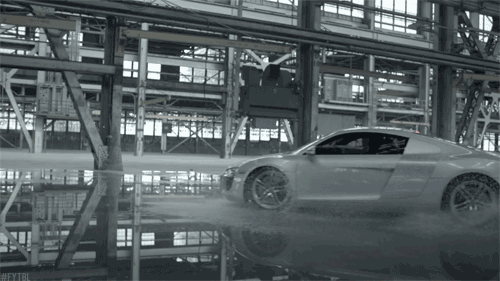Drifting 101: A Brief History About the Driving Technique

July 15, 2015
Drifting is the driving technique where the driver oversteers the vehicle when passing corners, causing it to lose traction in the rear two wheels or all four tires while still retaining control. You can always tell when a car is drifting when the rear slip angle is greater than the front slip angle, such that the front wheels and the turn are pointing in opposite directions. For instance, if the wheels are turning right, the car will go left and vice versa (Like what Doc Hudson taught Lightning McQueen in Cars, yeah!).
You might be itching right now to try drifting. But before we show you some of the techniques you need to learn to master this art as well as the modifications you need to make on your car to make it drift-worthy (u-bolt replacements and what not), let’s first have an introductory history lesson about it.
Origins
No one really knows where exactly drifting came from, aside from the fact that it started as a form of underground street racing. One thing’s for sure, though: Japan was one of the earliest countries develop and practice the technique. In fact, Kunimitsu Takahashi, the man considered as the father of drifting, is Japanese! Originally a motorcycle driver, he developed numerous drifting techniques during the 1970’s which would help him earn several championships all over the country as well as win countless fans who love seeing his spectacles of smoking tires.
Rise in Popularity
Takahashi’s techniques soon became popular among street racers as well. One in particular was Keiichi Tsuchiya, dubbed the “Drift King” of Japan, who used to practice drifting on mountain roads. He quickly became popular among the racing crowd, and a video known as Pluspy was produced in 1987 by many well-known car magazines to showcase his talent. Tsuchiya would later organize the first-ever drifting event called the D1 Grand Prix with Option magazine founder and editor Daijiro Inada in 1988.
In a few years, the technique became popular outside of Japan. The earliest known non-Japanese drifting event was held at Willow Springs Raceway, California in 1996, and it was also hosted by Daijiro Inada and Keiichi Tsuchiya alongside NHRA Funny Car drag racer Kenji Okazaki. Judges for the event include Rhys Millen and Bryan Norris. Since then, drifting popularity rose high throughout North America, Australia, Europe, and Asia. The driving technique was even featured in various films, television shows, games, and documentaries, most notably Initial D, Cars, The Fast and the Furious: Tokyo Drift, and Need for Speed: Underground.
Present-Day Drifting
Today, drifting is a competitive motorsport where drivers use exclusively rear-wheel-drive cars to outmatch each other. Points are given by judges based on several factors, including speed, line, angle, and overall impression. Aside from the pioneering D1 Grand Prix, other drifting events currently exist all over the world today. These include the US Formula D, the British Drift Championships, the DRIFT ALLSTARS King of Europe, the Chinese WDS, the Formula Drift Asia organized by Indonesia, Malaysia, Singapore and Thailand, and the New Zealand Drift Series.
Drifting has come a long way from being an underground completion, evolving into one of the most popular organized motorsports we have today. By knowing a little bit of its history, we hope you might better appreciate this driving art.





